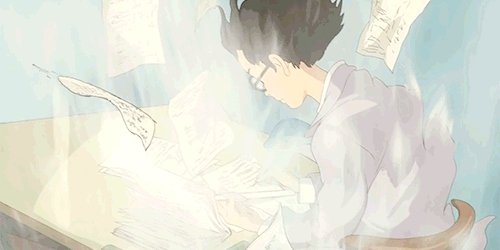Run It Back - Anime Magic Film Series
A recap of the Anime Magic Film Series, hosted at Carolina Theatre.
For the last 40 years, anime has been an undercurrent of American pop culture. Any 90s baby will tell you that, thanks to Cartoon Network, Toonami, and Adult Swim, characters like Goku, Spike Spiegel, and Sailor Moon became household names, migrating from Japanese living rooms to the screens of adolescent America. I mean, just look at this list and tell me you didn’t watch five of these shows, at minimum! That doesn’t even include the films introduced by the network as well. CN/Adult Swim were notorious for their Miyazaki movie marathons that I and millions of Americans skipped dinner and homework to binge-watch in its entirety.
Fast forward to the future and, like Samurai Jack through a time portal, here I am still fighting the good fight, missing meals and skipping work to dive deep into the world of Japanese animation.
Last weekend, Carolina Theatre hosted Anime-Magic Film Series, a 13-film exploration through some of the genre’s most acclaimed stories, a few of which are from Oscar-winning director and producer Hayao Miyazaki whose work with Studio Ghibli greatly influenced American studios like Pixar and Dreamworks.
In total, I crammed seven films into a weekend that also include Super Secret Dance Party and Duke/UNC Part II. Needless to say, the MATI and movie popcorn were flowing. If I was a yoga practitioner, this would have been a good week for it. Sitting in a chair for hours at a time reminds of the worst parts of being a high school student stuck at a desk.
Here’s a quick look back at the 7 films. These are not movie reviews. Those exist elsewhere in the world written by people far more qualified than me. My goal is to share thoughts and reflections about the films as they relate to one another, the times, and how they stack up against America animated cinema. This commentary is limited to the little I know about film and Japanese culture, so whatever hot takes you have, save it.
DAY 1
The Wind Rises (2013)

I could not have asked for a better film to kick off the weekend. The Wind Rises is one of Miyazaki’s more recent films (2013) about the life of Jiro Horikoshi, a aerospace engineer who built his reputation at Mitsubishi and is largely responsible for the aircrafts used by the Imperial Japanese Navy during World War II.
To my knowledge, it is Miyazaki’s only work of direct historical fiction, though most of his films reference Japanese history, political culture, and environmentalism, including Princess Mononoke, which we’ll touch on later. Unlike his other films, where Miyazaki creates his own habitat for the characters to explore, the environment for The Wind Rises is predetermined (the movie is an adaptation of the 1936 novel The Wind Has Risen). Yet, Miyazaki takes his fantastical illustration style and tells a true story in a way that more than likely (speaking from personal experience here) engaged an audience with no knowledge of Horikoshi.
For anyone unfamiliar with Miyazaki’s work, I would not recommend this as your introduction to the catalog. While the animation is concurrent with his other films, the story is more rigid compared to something like Spirited Away, a film that won an Oscar in 2001 and is considered by some, including 2018 Oscar-winner Guillermo del Toro, to be one of the best films of the 21st century. Start there and then journey through the rest of the Miyazaki-verse.
Ponyo (2008)

Ponyo, another Miyazaki/Studio Ghibli film, is a delightful story about childhood friendship that features Sosuke, a 5-year-old boy who lives in a seaside cottage with his mother, and Ponyo, a human/mermaid offspring who runs away from her wizard father to become a “real” human. The journey is an exploration of love and its many manifestations in our lives: between spouses, their children, between friends, and one’s community. Compared to The Wind Rises, there is much less life-threatening conflict throughout the story, but nonetheless, there are equally as many lessons to be learned about what it means to care for others.
Coming off the heels of a film as emotionally gripping as The Wind Rises, Ponyo was an unintended but well-timed intermediary before the nightcap at Ghost in the Shell on Friday.
Ghost in the Shell (1995)

My first thought after it ended was, “how much was this film influenced by The Matrix?” I had it reversed. The Wachowskis’ drew heavily on Ghost in the Shell when developing the aesthetic for their own cyberpunk dystopian universe and it is immediately apparent as the film rolls through opening credits.
Released in 1995, it follows the life of Motoko Kusanagi, a cybernetic android police captain, as she tracks the whereabouts of The Puppet Master, a notorious cyberbrain hacker. Both characters grapple with their sense of identity and what it means to be human. The conclusion of the film leaves the story open-ended which is not an uncommon device used throughout anime. It is one of the more beautiful elements of the genre as it mirrors many of our own lives; constantly moving, always another story to tell, unlike many American films that must end with a tightly knotted bow and a happily ever after.
I’m a fan of the tech-stopia subgenre. “Black Mirror”-esque, futuristic alternate (but plausible) reality television is not new but hot in the streets. We all want to know where technology is taking us and Ghost in the Shell is a dark, thought-provoking door #1. It ages well as science fiction continues to predict reality. Of the seven films, Ghost in the Shell kept me in my seat the longest contemplating our collective future during post credits.
DAY 2
My Neighbor Totoro (1988)

Even if you have never seen an anime before, I’d bet big money you have seen Totoro or one of the millions of spoofs available on the Internet (or the front of my sweatshirt). My Neighbor Totoro (1988) was Miyazaki’s second film with Studio Ghibli, and the character Totoro is now the official mascot of Studio Ghibli.
Like Ponyo, the story has little consequence. Two young girls move out to the sticks with their father while their mother recovers from a long-term illness in the hospital. They discover the forest spirits that inhabit the area which ultimately leads them to Totoro, the forest kingpin. There is a small rift in the family toward the end (which you’ll have to see when you watch it. This is a spoiler-free post).
It’s a perfect film for young children and animation geeks alike. As one of his first major productions, My Neighbor Totoro exemplifies the style attributed to Studio Ghibli and is still one of its most popular films to date. It would take American audiences 13 more years before they finally put some respek on my man’s name and gave him the Oscar for Spirited Away in 2001 which is a surprise to no one. We’re always behind the curve, but hey, at least we’re consistent.
Paprika (2006)

Paprika is a cross between Inception and Fantasia, centered on the idea of psychotherapy through dream analysis. Yeah, you can’t even imagine.
When I said Ghost in the Shell kept me in my seat the longest, it was a half-truth. Paprika was stunning, in that it was the most visually stimulating of all the films and we were all catatonic at the end. It would literally take me the rest of my life to explain that movie to you and I wouldn’t even scratch the surface. Just watch the trailer:
Satoshi Kon, the director, is a cult hero in the animation word due to his untimely death in 2010 from pancreatic cancer at the age of 46. His work frequently explores themes of dreams vs. reality and the power of imagination.
The movie was worth it, don’t get me wrong. Afterwards, I joked with my buddy and needs-to-be-more-frequent contributor to Runaway, Ned Phillips, that maybe it would have been more fun while under the influence of hallucinogens (which I have no experience as of this piece), and he quickly shot down that idea for fear that it would complete melt one’s brain. Walking out of Fletcher Hall, I suspected it was too late for that...
DAY 3
Princess Mononoke (1997)

Princess Mononoke is another hallmark film of the Studio Ghibli collection. In the spirit of a happy-belated International Women’s Day, this would be a dynamite film for any teen girl to see, with strong female characters throughout including the wolf princess herself, San, as well as the military general Lady Eboshi.
The film follows Emishi as he searches for a cure to the fatal curse bestowed upon him by a forest demon. It’s the longest of the seven films but paced well and unlike most of the other movies, it is rarely without conflict, both in the immediate sense between characters and the overall confrontation of ideas like environmentalism and war that flow concurrently with the main character’s journey.
As the title suggests, San (Princess Mononoke) is the standout character from the film. She is a relentless fighter with an unwavering moral stance against the corruption of the human race. She is neither good nor bad, but a complex individual living out her principles in the face of challenge and uncertainty. Even though I don’t believe in English dubs generally, I was not surprised to find that Claire Danes was the voice of San in the American version. Carrie Mathison would absolutely roll with a gang of wolf spirits, given the opportunity.
CONCLUSION
Can we give a shoutout to Carolina Theatre for hosting this series? It’s not often that I get to be this nostalgic about anime in one weekend. Our recruiting pitch on The Rundown will be even stronger next round. We expect to see you there. More anime if your life is a good thing.
If you’re looking for suggestions, at me on Twitter or hit up Pat Junior because that dude is an encyclopedia of current anime television (or ask him in person at his show Friday). For those of you we've converted, you can sign up for Crunchyroll, the Netflix of anime.

